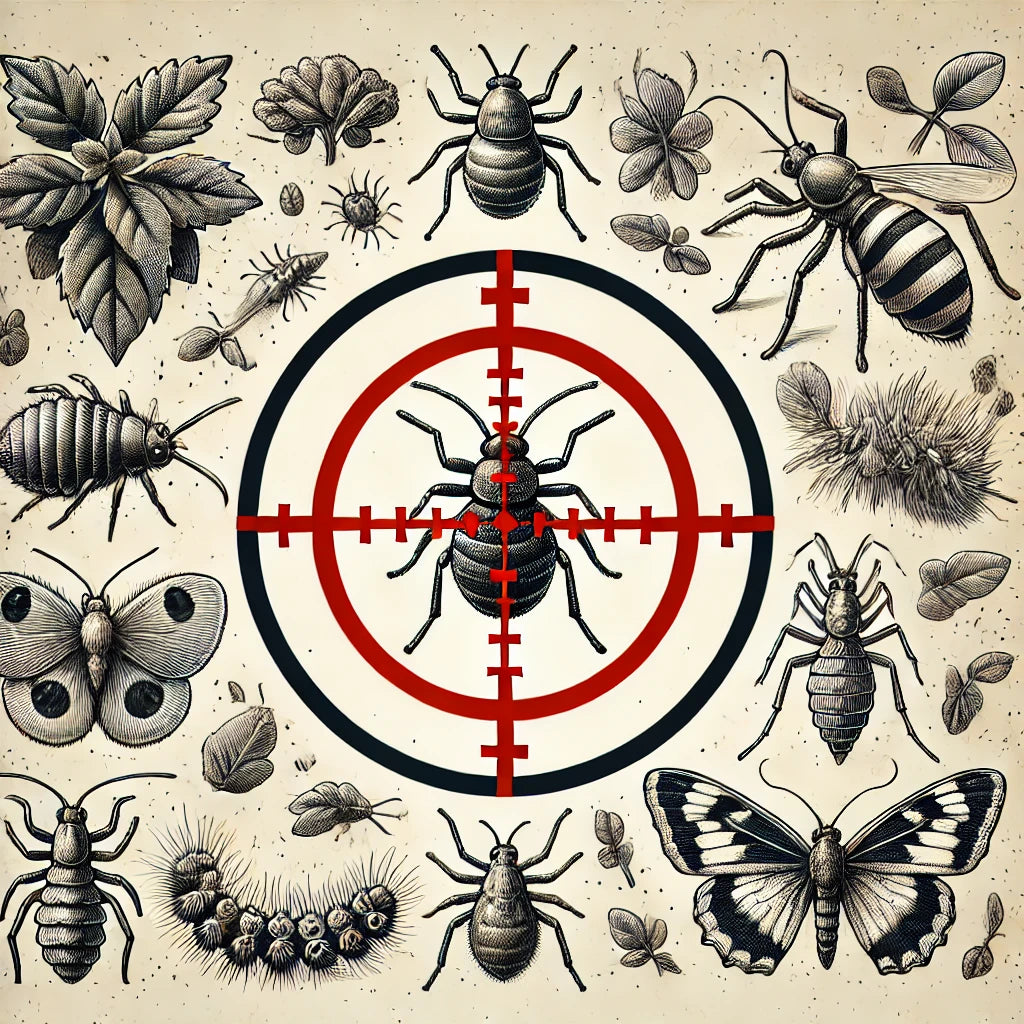
Understanding and Managing Pests and Fungal Infections in Lophophora Cultivation
Share
Lophophora, commonly known as peyote, is a slow-growing cactus revered for its spiritual significance and unique appearance. While hardy in nature, it can still fall prey to various pests and fungal infections that threaten its health. Proper identification and treatment are essential for maintaining a healthy Lophophora collection. Below are some of the most common pests and fungal infections that affect Lophophora and effective strategies to treat them.
1. Mealybugs
Identification: Mealybugs are small, white, cotton-like insects that typically cluster in the crevices of Lophophora. They feed on the plant's sap, causing stunted growth and sometimes leading to sooty mold, a secondary fungal infection that thrives on the honeydew excreted by these pests.
Treatment:
- Manual Removal: Using a cotton swab dipped in rubbing alcohol, gently dab each mealybug to kill it on contact. This method works well for small infestations.
- Insecticidal Soap: For larger infestations, insecticidal soap can be applied to the entire plant. Make sure to thoroughly cover all crevices where mealybugs hide.
- Systemic Insecticides: In cases where manual removal and soaps fail, a systemic insecticide may be required. These are absorbed by the plant and kill pests as they feed.
2. Spider Mites
Identification: Spider mites are tiny, often red or brown, and can be difficult to see with the naked eye. They leave behind fine webs and cause yellowing or mottling on the cactus as they suck sap from the plant.
Treatment:
- Water Spray: A strong spray of water can dislodge spider mites. Regular spraying can help keep their population under control.
- Miticides: Specific miticides are available for severe infestations. Use according to the label instructions, ensuring all affected areas are treated.
- Neem Oil: This natural treatment can be effective against spider mites. Spray neem oil on the affected areas, making sure to cover the undersides of the cactus where mites often congregate.
- Predatory Mites: Introduce predatory mites, such as Phytoseiulus persimilis or Neoseiulus californicus, to your Lophophora plants. These beneficial insects feed on spider mites and can significantly reduce their population. Predatory mites are particularly useful in greenhouses or controlled environments where they can be sustained over time.
3. Scale Insects
Identification: Scale insects appear as small, round or oval, brownish or grayish bumps on the surface of the cactus. They can be mistaken for natural cactus growths but are harmful insects that feed on the sap.
Treatment:
- Manual Removal: Like mealybugs, scale insects can be manually removed using a cotton swab dipped in rubbing alcohol.
- Horticultural Oils: These oils suffocate scale insects and can be applied as a preventative measure as well as a treatment.
- Insecticidal Soap: Similar to other pests, insecticidal soaps can be effective, but ensure the scales are thoroughly covered.
4. Root Aphids
Identification: Root aphids are similar to regular aphids but feed on the roots of the cactus. Symptoms include wilting, stunted growth, and an overall decline in plant health. They are often discovered only when repotting the plant.
Treatment:
- Soil Drench: Insecticidal soap or neem oil can be used as a soil drench to target root aphids. Pour the solution through the soil to reach the roots.
- Beneficial Nematodes: These microscopic worms prey on root aphids and can be introduced into the soil as a biological control.
- Repotting: In severe cases, removing the cactus from its pot, washing the roots thoroughly, and repotting in fresh, sterile soil may be necessary.
5. Fungus Gnats
Identification: Fungus gnats are small, mosquito-like insects that thrive in moist soil. Their larvae feed on organic material in the soil and can damage young roots.
Treatment:
- Reduce Watering: Allow the soil to dry out more between waterings, as fungus gnats thrive in damp conditions.
- Sticky Traps: Yellow sticky traps can help reduce the adult gnat population.
- Biological Controls: Beneficial nematodes or Bacillus thuringiensis var. israelensis (BTI) can be used to target the larvae in the soil.
6. Fungal Infections
Identification: Fungal infections in Lophophora can manifest as soft, mushy spots on the cactus, black or brown discolorations, or a general decline in the plant's health. Overwatering and poor air circulation are common causes of fungal infections.
Treatment:
- Isolation: Immediately isolate the affected plant to prevent the spread of the fungus to other plants.
- Remove Infected Tissue: Using a sterile knife, carefully cut away the infected tissue. Make sure to remove all affected areas, as fungi can spread quickly.
- Fungicides: Apply a fungicide specifically designed for cacti and succulents to the affected area. Copper-based fungicides or sulfur-based fungicides are commonly used.
- Improve Air Circulation: Ensure the plant has adequate air circulation and reduce humidity levels. This can be achieved by spacing plants further apart and increasing ventilation.
- Adjust Watering Practices: Allow the soil to dry out completely between waterings to prevent further fungal growth. Avoid watering the cactus from above, as water trapped in the plant’s crevices can promote fungal infections.
Preventative Measures
To minimize the risk of pest and fungal infestations, consider the following preventative measures:
- Quarantine New Plants: Always quarantine new plants for a few weeks before introducing them to your collection to ensure they are pest- and disease-free.
- Regular Inspections: Regularly inspect your Lophophora plants for early signs of pest activity or fungal infections, focusing on crevices and undersides of the cactus.
- Proper Watering Practices: Avoid overwatering, as many pests and fungi thrive in damp conditions. Ensure good airflow around the plants to prevent a humid environment.
- Sterilize Tools: Always sterilize your tools before and after use to prevent the spread of fungi and other pathogens.
By being vigilant and proactive, you can keep your Lophophora cacti healthy and thriving, free from pests and fungal infections that seek to harm them. Regular monitoring and timely intervention are key to successful management.
